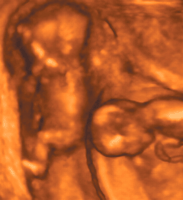This week in the BMJ
Volume 330, Number 7495, Issue of 9 Apr 2005Passive smoking may kill 30 people a day in the UK
Test for M component in patients suspected of having osteoporosis
Folic acid may not increase twinning
Learn to allocate by minimisation
Amsterdam improves on AIDS prophylaxis and follow-up
Take part in our interactive case report
Passive smoking may kill 30 people a day in the UK
Each week in the United Kingdom, passive smoking may cause the death of at least one employee in the hospitality industry and more than 200 people who are exposed to tobacco smoke at home. Jamrozik's estimates of the number of deaths that may be due to passive smoking (p 812) are based on national databases. Although sensitivity analyses showed that these may be overestimates by two thirds, they also showed that if smoking in public places was banned and the general prevalence of smoking fell to under 25% of middle aged adults, all deaths attributable to passive smoking at work would eventually disappear.
|
Test for M component in patients suspected of having osteoporosis
Measuring monoclonal bands (M component) in serum should be part of the investigation of patients referred to osteoporosis clinics, as multiple myeloma is 75 times more common in patients with osteoporosis. In a cross sectional study including 799 people newly referred to the clinic with suspected osteoporosis, Abrahamsen and colleagues (p 818) found that 1 in 20 patients with newly diagnosed osteoporosis had multiple myeloma or monoclonal gammopathy of undetermined significance. As a diagnostic test for multiple myeloma in patients with osteoporosis, M component in serum had a specificity of 95% and a positive predictive value of 17.6%.
Folic acid may not increase twinning
In vitro fertilisation is a strong confounder in assessments of the correlation between using folic acid during pregnancy and giving birth to twins, and the findings from a recent Swedish study—that folic acid was associated with an increase in dizygotic twinning—are probably incorrect. Berry and colleagues (p 815) used models based on Swedish records for 1995-9 to establish whether failure to adequately adjust for a reported misclassification of use of in vitro fertilisation could have led to the false finding. They found that even when misclassification of in vitro fertilisation was reduced to 5%, the bias persisted in the adjusted model.
|
Learn to allocate by minimisation
In small clinical trials stratified randomisation is not effective and minimisation is the only widely accepted method of ensuring balance between groups for several prognostic factors, say Altman and Bland on p 843. Using an example of a dietary behavioural trial, they explain how allocation by minimisation should be done in order to minimise the imbalance between the groups according to four chosen variables. Minimisation is a secure allocation system when used by an independent person, the authors say.
Amsterdam improves on AIDS prophylaxis and follow-up
Health services should collaborate in prevention and follow-up for people reporting exposure to HIV and hepatitis B or C, to improve the quality of care for those who may be infected. Since a protocol was implemented in Amsterdam in 2000 to increase collaboration among all local hospitals and health services, Sonder and colleagues (p 825) report, most people now comply with treatment and follow-up; HIV prophylaxis starts soon after exposure; and in nearly two thirds of cases the source of infection is traced and tested.
|
Take part in our interactive case report
Can you spot the differential diagnoses? What investigations would you do next? What do you think could have been done better? What are the ethical considerations? On p 834, Siotia and colleagues present the case of a woman with Down's syndrome who developed postoperative hypoxia after a dual operation for an umbilical hernia and a total hysterectomy. All BMJ readers are invited to use the rapid responses feature on bmj.com to discuss the case.


